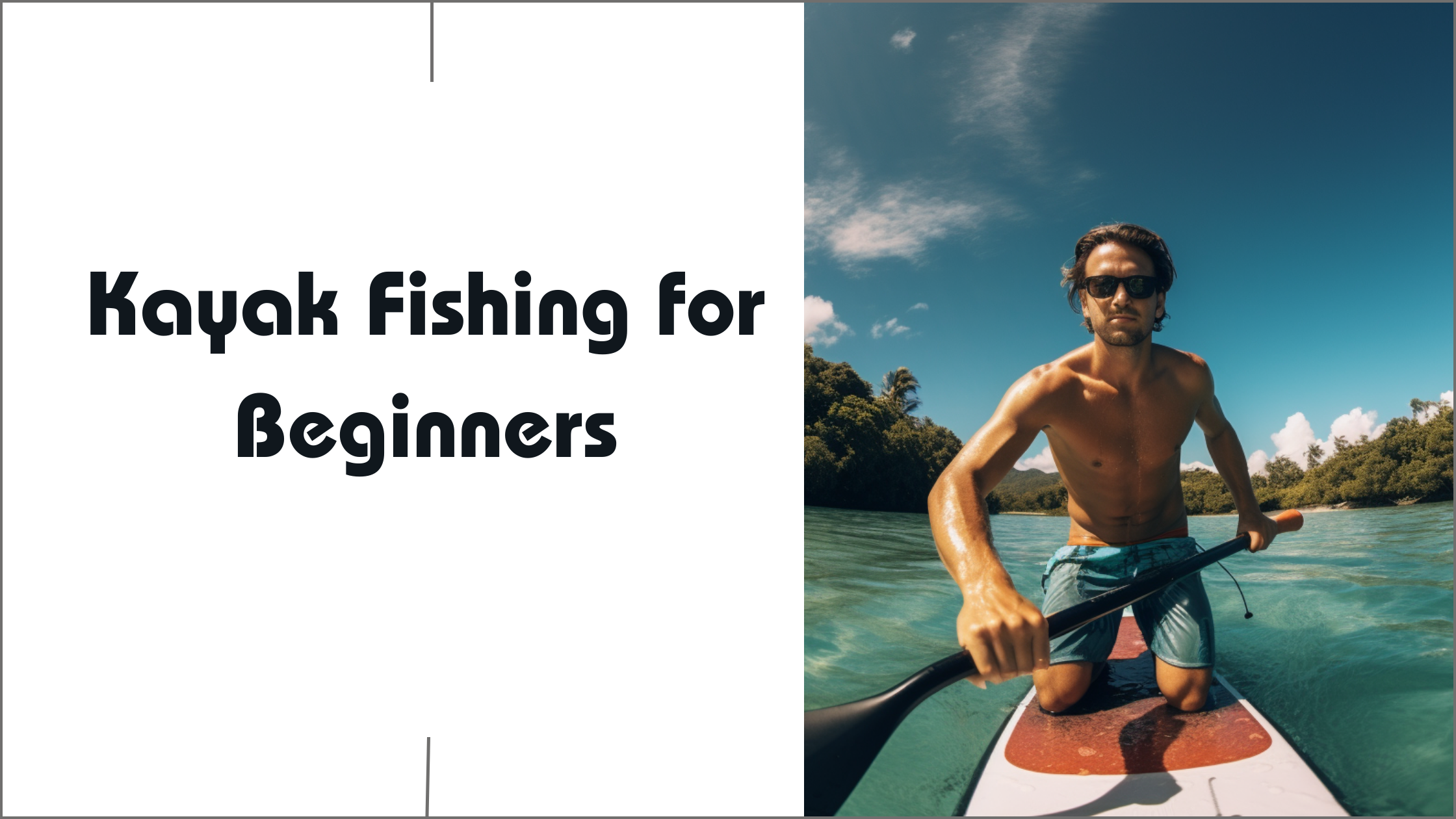Welcome to the world of kayak fishing, a thrilling blend of tranquility and adrenaline.
You’re in the right place, where the river’s whisper meets the fish’s dance. We’ll tackle fears, debunk myths, and ignite your passion for this incredible sport.
With paddle in hand and determination in heart, let’s embark on this journey together. Stay tuned, as we dive deeper into the art of kayak fishing, one ripple at a time.
Contents
Understanding Basics of Kayak Angling
First things first, picking the right kayak is crucial.
Don’t get swayed by flashy colors or sleek designs.
The best fishing kayaks are stable, comfortable, and have ample room for gear. Many beginners prefer sit-on-top kayaks for their stability and ease of access to fishing gear.
Next, let’s talk gear. You’ll need a rod, a reel, and some bait, but don’t forget the essentials like a life vest, paddle, and anchor. Keep it simple. A few well-chosen lures can catch a wide variety of fish.
Now, onto the art of casting from a kayak. It’s different than casting from shore or a boat. You’re closer to the water, which changes the angle. Practice makes perfect. Start with short, accurate casts before trying for distance.
One important tip: always mind the wind and current. They can push you off your fishing spot or make it hard to control your kayak. Learn to use them to your advantage, and you’ll be a step ahead of the game.
Never underestimate the importance of stealth. Fish are sensitive to noise and vibrations. Move slowly, keep quiet, and you’ll increase your chances of a successful catch.
Kayak fishing is a rewarding sport. It combines the thrill of the catch with the serenity of being on the water. With the right approach and a little practice, anyone can master it.
Key Features of Beginner’s Fishing Kayak
Let’s dive straight into the heart of the matter. The hull design is the backbone of a fishing kayak. A flat hull, stable and forgiving, is perfect for beginners. It’s your trusted partner when the water gets a bit rough.
Now, let’s talk about cockpit size. A bigger cockpit offers more room to move around. It’s a blessing when you’re wrestling with your catch. But, it’s a double-edged sword. A bigger cockpit might also mean more water splashing in.
The kayak’s weight capacity is another key feature. It’s not just about your weight. Add your gear, your catch, and some extra for safety. You don’t want to be sitting low in the water.
Then, there’s storage. A good fishing kayak has ample storage. A place for everything, and everything in its place. This includes rod holders, tackle boxes, and a cooler for the catch.
Remember, the right kayak is out there. The one that fits you like a glove. It’s about finding it. So, take your time, do your research, and make an informed decision. Happy fishing!
How to Integrate Fishing Gear with Kayak
Kayak fishing is an art. You’re balancing on water, casting a line, and hoping for a bite. The gear you bring matters. It’s not just about the rod and the bait. It’s about how you integrate it all into your kayak.
The first step is understanding your kayak. Each model has unique storage options. Some have hatches, others have bungee cords. Use these to your advantage. Secure your tackle box under a bungee cord. Stow your cooler in a hatch. Keep your gear secure, but within reach.
Next, consider rod holders. These are a game changer. They free up your hands when you’re paddling or reeling in a catch. There are different types: flush mount, clamp-on, and rail mount. Choose based on your kayak’s design.
Anchor systems are also crucial. They keep you steady when the water gets choppy or the fish start biting. There are two types: a traditional anchor or a stakeout pole. The choice depends on the water you’re fishing in.
Lastly, don’t forget a paddle leash. It’s a simple cord that secures your paddle to your kayak. It might not seem important, but it is. It’s easy to lose a paddle when you’re focused on a fish.
In kayak fishing, the gear isn’t just about catching fish. It’s about creating a system that works for you. It’s about integrating your gear with your kayak. It’s about making the water your second home. And that, my friend, is the true art of kayak fishing.
Cost Analysis of Starting Kayak Fishing
Starting kayak fishing doesn’t have to burn a hole in your pocket. The first thing you’ll need is a fishing kayak. They range from $300 to $1,500, depending on the features. Don’t let the price tag scare you. A basic model will do for beginners.
Next, you’ll need a fishing rod and reel. A decent setup can cost anywhere from $50 to $200. Bait and tackle are next on the list. These can range from $10 to $50, depending on your choice of fish.
Life jackets are a must for safety. They typically cost between $30 and $100. Safety should never be compromised, even if you’re a good swimmer.
A paddle is another essential item. You can get a good one for around $50 to $150. Don’t forget about the fishing license. The cost varies by state, but it’s generally around $50.
Extra gear like a tackle box, fishing line, and hooks will add to your cost. But these are one-time investments that will last you for years.
Here’s a cost breakdown for beginners:
– Fishing kayak: $300 – $1,500
– Fishing rod and reel: $50 – $200
– Bait and tackle: $10 – $50
– Life jacket: $30 – $100
– Paddle: $50 – $150
– Fishing license: ~$50
– Extra gear: ~$100
Remember, the joy of kayak fishing isn’t in the gear. It’s in the thrill of the catch, the peace of the water, and the connection with nature. So don’t let cost deter you. Start small, and invest more as your passion grows.
Alternatives to Kayak for Freshwater Fishing
Freshwater fishing isn’t just about kayaks. There’s a world of options out there. Let’s explore some alternatives.
Canoe fishing is an age-old tradition. It offers more space for gear and a buddy. Stability is the key. The wider the canoe, the more stable it is. It’s a slower ride, but with a more relaxed pace.
Stand-up paddleboard fishing is a newer trend. It gives you a vantage point to spot fish. It’s a challenge to balance, but it’s a thrill once you get the hang of it.
Float tube fishing is a budget-friendly option. You sit in a floating ring, your legs dangling in the water. It’s a laid-back style of fishing, perfect for lazy summer days.
Rowboat fishing is a classic. It’s a sturdy option, great for rougher waters. It’s got plenty of space for gear and a few friends.
Belly boat fishing is for the adventurous. You’re close to the water, almost part of it. It’s an immersive experience, a closer connection to the fish you’re chasing.
Each option has its pros and cons. It’s about finding what suits your style. Kayak fishing is a great sport, but it’s not the only way to fish. Don’t be afraid to try something new. You might find a new love in the world of freshwater fishing.
Wrapping Up: Kayak Fishing for Beginners
We’ve navigated the waters of kayak fishing, starting from the basics of kayak angling, understanding the key features of a beginner’s fishing kayak, and integrating fishing gear with your kayak. We’ve also delved into the cost analysis of starting kayak fishing and explored alternatives to kayaks for freshwater fishing.
FAQ: What are the key features of a beginner’s fishing kayak?
A beginner’s fishing kayak should be stable, easy to maneuver, and have ample storage for fishing gear.
FAQ: How can I integrate fishing gear with my kayak?
You can use a fishing crate or install rod holders and tackle boxes to your kayak.
FAQ: Are there alternatives to kayak for freshwater fishing?
Yes, you can use float tubes or fishing canoes as alternatives.
Embrace the thrill of kayak fishing. It’s more than a sport. It’s a dance with nature.

